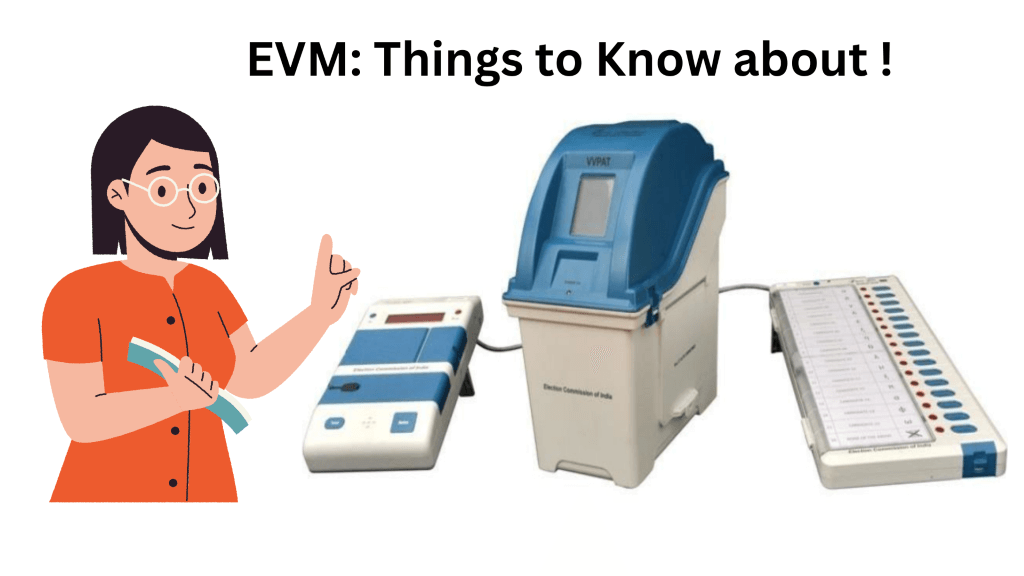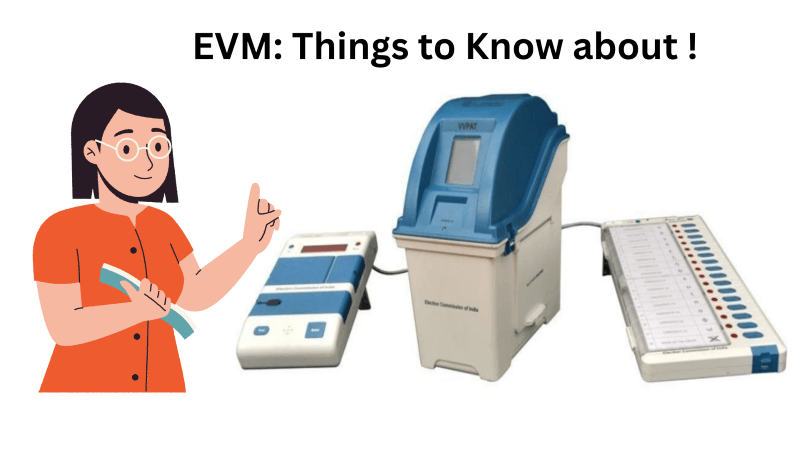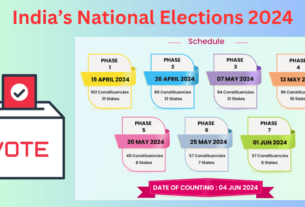In the realm of modern democracy, the evolution of voting mechanisms has been as crucial as the principles they uphold. Electronic Voting Machines (EVMs) stand as a testament to this evolution, marking a significant shift from traditional paper-based voting systems. With their introduction, debates about efficiency, security, and accessibility have taken center stage. Let’s delve into the world of EVMs, exploring their history, functionality, controversies, and future prospects.

A Brief History
The concept of electronic voting dates back to the 1960s, with various attempts made to digitize the voting process. However, it wasn’t until the late 20th century that EVMs gained traction globally. India pioneered the large-scale adoption of EVMs in the 1990s, followed by countries like Brazil, the Philippines, and many others. The United States also experimented with EVMs, particularly after the controversial 2000 presidential election, although the adoption has been patchy due to concerns about security and reliability.
Functionality
EVMs are sophisticated electronic devices designed to record votes digitally. Typically, they consist of a ballot unit, a control unit, and a VVPAT (Voter Verified Paper Audit Trail) in some systems. The ballot unit allows voters to select their preferred candidate by pressing a button or touching a screen, while the control unit records and stores the votes securely. VVPATs provide a printed paper record of the vote cast, offering a physical verification mechanism for voters and auditability for election authorities.
Advantages
EVMs offer several advantages over traditional paper-based systems:
- Efficiency: EVMs expedite the voting process, reducing the time required for ballot casting, counting, and result declaration.
- Accuracy: They minimize errors associated with manual vote counting, ensuring greater accuracy in tallying results.
- Cost-Effectiveness: Over the long term, EVMs can be more cost-effective than paper-based systems, saving resources on printing and storage.
- Reduced Electoral Fraud: EVMs mitigate the risk of tampering and manipulation, enhancing the integrity of the electoral process.
Controversies and Challenges
Despite their advantages, EVMs have faced criticism and skepticism on several fronts:
- Security Concerns: Critics argue that EVMs are susceptible to hacking and manipulation, raising doubts about the sanctity of election results.
- Transparency and Trust: Some voters express concerns about the lack of transparency in electronic voting, especially without a paper trail or robust audit mechanisms.
- Accessibility Issues: EVMs may pose challenges for certain demographics, such as elderly voters or those with disabilities, who may struggle with the technology.
- Maintenance and Obsolescence: EVMs require regular maintenance and updates to ensure functionality and security, which can be resource-intensive for election authorities.
Future Prospects
Despite the controversies, EVMs continue to evolve, with advancements in technology aimed at addressing security concerns and improving usability. Biometric authentication, blockchain technology, and remote voting systems are some innovations being explored to enhance the integrity and accessibility of electronic voting.
Moreover, the ongoing COVID-19 pandemic has accelerated the adoption of remote and electronic voting solutions, as governments seek alternatives to traditional in-person voting methods.
In conclusion, EVMs represent a significant milestone in the evolution of electoral systems, offering both opportunities and challenges. While they hold the promise of efficiency, accuracy, and modernization, their widespread acceptance hinges on addressing concerns related to security, transparency, and inclusivity. As technology continues to advance, so too will the debate surrounding the role of EVMs in shaping the future of democracy.
Mechanics: How Electronic Voting Machines (EVMs) Work
Electronic Voting Machines (EVMs) have revolutionized the way we conduct elections, streamlining the voting process and providing quicker, more accurate results. But how exactly do these sophisticated devices function? Let’s delve into the mechanics of EVMs and explore the intricate processes that ensure the integrity and efficiency of the electoral system.
Components of an EVM
At its core, an EVM consists of three primary components:
- Ballot Unit: This is the interface through which voters cast their votes. It contains buttons or a touchscreen display where voters select their preferred candidates.
- Control Unit: The control unit is the brain of the EVM, responsible for recording and storing the votes securely. It ensures that each vote is counted accurately and prevents tampering or manipulation.
- Voter Verified Paper Audit Trail (VVPAT) (optional): In some EVM systems, a VVPAT is included to provide a physical paper trail of the vote cast by the voter. It prints a receipt showing the selected candidate’s name, allowing voters to verify their choices before the vote is recorded electronically.
The Voting Process
The voting process using an EVM typically follows these steps:
- Voter Authentication: Before casting their vote, voters are authenticated by election officials using their voter ID cards or other identification methods to ensure eligibility.
- Casting the Vote: Once authenticated, voters enter the voting booth and select their preferred candidates on the ballot unit by pressing the corresponding buttons or touching the screen.
- Recording the Vote: When a voter makes their selections, the control unit records the votes electronically, registering each vote securely in its memory.
- Verification (with VVPAT, if available): In systems equipped with a VVPAT, a paper receipt is printed showing the voter’s selections. The voter can verify the printed receipt to ensure that their choices have been accurately captured before it is dropped into a sealed box for later audit purposes.
- End of Voting: Once all voters have cast their votes, the polling officials conclude the voting process, and the EVM is sealed to prevent any further tampering.
Counting and Tabulation
After the voting process concludes, the EVMs are transported to a central location where the votes are counted and tabulated. The control units are connected to a computer system, which extracts the voting data from each device. The data is then processed to determine the total number of votes received by each candidate or party.
Security Measures
To ensure the integrity and security of the voting process, EVMs are equipped with various security features:
- Encryption: Voting data stored in the EVMs is encrypted to prevent unauthorized access or tampering.
- Seals and Tamper-Evident Features: EVMs are sealed before and after the voting process to prevent tampering. Any attempt to tamper with the device would be evident from broken seals or tamper-evident features.
- Randomization: EVMs are programmed to randomly allocate the order of candidates’ names on the ballot unit to prevent bias or manipulation.
- Testing and Certification: EVMs undergo rigorous testing and certification processes to ensure that they meet security and reliability standards before being deployed for elections.
Conclusion
Electronic Voting Machines have undoubtedly transformed the electoral landscape, offering speed, accuracy, and efficiency in the voting process. Understanding how EVMs work is crucial for ensuring trust and transparency in the democratic process. As technology continues to advance, EVMs will likely evolve further, incorporating new features and innovations to address emerging challenges and concerns in electoral systems around the world.
Difference Between EVM Machine V/S VVPAT
The primary difference between Electronic Voting Machines (EVMs) and Voter Verified Paper Audit Trails (VVPATs) lies in their functionality and purpose within the voting process:
1. Electronic Voting Machine (EVM):
- Function: EVMs are electronic devices used for casting and recording votes digitally. They consist of a ballot unit and a control unit.
- Voting Process: Voters select their preferred candidates on the EVM’s interface (ballot unit) by pressing buttons or touching a touchscreen. The control unit records and stores the votes securely.
- Purpose: EVMs streamline the voting process, offering efficiency, accuracy, and speed in tabulating election results.
- Output: EVMs do not produce a physical paper record of the vote cast by the voter.
2. Voter Verified Paper Audit Trail (VVPAT):
- Function: VVPAT is a mechanism introduced in some EVM systems to provide a physical paper trail of the vote cast by the voter.
- Voting Process: Alongside using the EVM, voters can verify their selections by viewing a printed paper receipt (VVPAT) that displays the candidate’s name or symbol they voted for. This allows voters to confirm that their vote has been accurately recorded.
- Purpose: VVPAT enhances transparency and trust in the voting process by providing a tangible, verifiable record of each vote cast. It serves as a backup in case of disputes or recounts.
- Output: VVPAT produces a printed paper receipt that voters can visually verify before it is dropped into a sealed box for later audit purposes.
In summary, while EVMs are electronic devices used for digital voting and recording, VVPATs are paper-based systems that complement EVMs by providing a physical audit trail of the votes cast, enhancing transparency and confidence in the electoral process.



